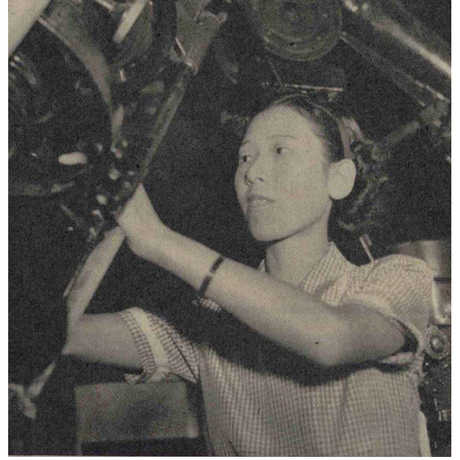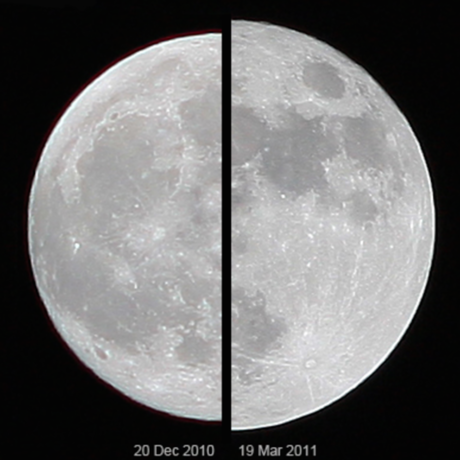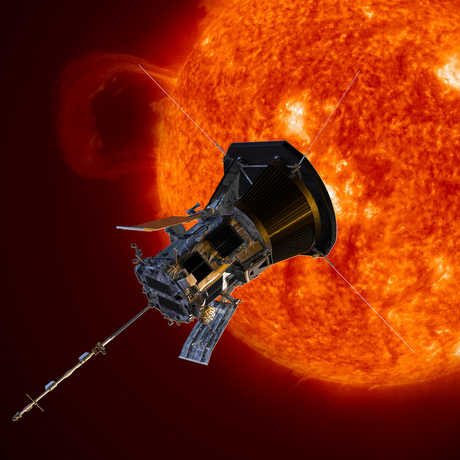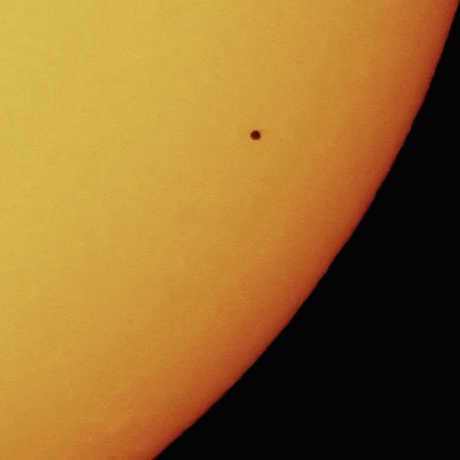Universe Update
Living in a Bubble
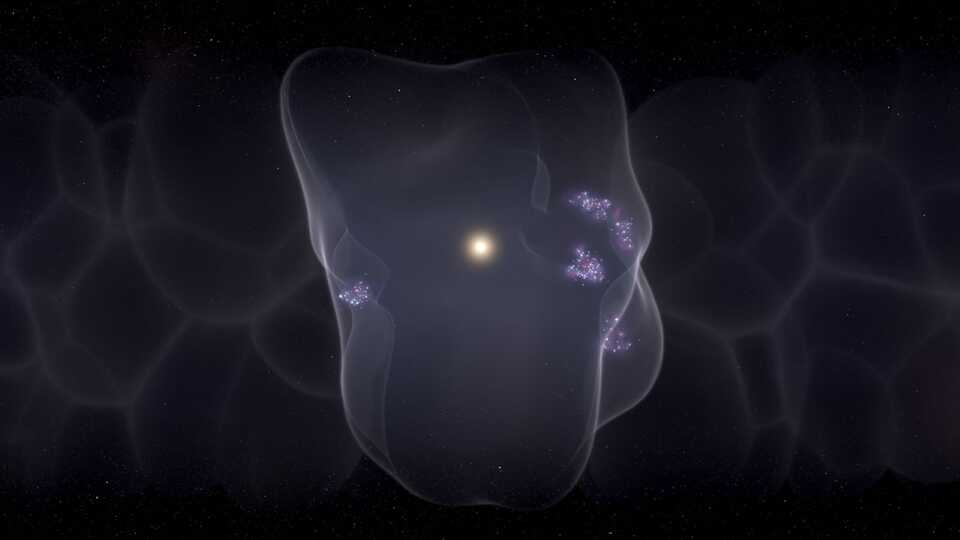
Artist’s illustration of the Local Bubble with star formation occurring on the bubble’s surface. Scientists have now shown how a chain of events beginning 14 million years ago with a set of powerful supernovae led to the creation of the vast bubble, responsible for the formation of all young stars within 500 light years of the Sun. (Image courtesy STScI and Leah Hustak.)
Residing in San Francisco, I am acutely aware that I live in a bubble. (Especially recently…) But as it turns out, our entire solar system appears to be living in a much grander bubble! One that stretches more than 1,000 light years around the Sun.
This is one of the stories highlighted during virtual press conferences on the third day of what would have been the 239th meeting of the American Astronomical Society (AAS), had it not been canceled for reasons I will leave it to the reader to guess. (I wrote a bit about black hole news on Monday, and Assistant Manager of Planetarium Programs Jacque Benitez shared the latest on mapping the cosmos yesterday.)
According to a major announcement from the Harvard-Smithsonian Center for Astrophysics this morning, all nearby young stars originated in a 1,000-light-year-wide “bubble” surrounding Earth. And at a press conference this afternoon, Catherine Zucker from the Space Telescope Science Institute expanded on the results. “What I’m going to tell today is really an origin story,” she said, which she described as reconstructing the evolutionary history of our galactic neighborhood.
For decades, we’ve known that the Sun resides in what astronomers charmingly refer to as the Local Bubble (unless you catch them while delivering a talk to their peers, in which case they might refer to it as an “underdensity” in the interstellar medium, a.k.a. the ISM). Basically, around the Sun, there’s less gas and dust between the stars than we see around other stars.
It’s probably worth a quick aside about the “vacuum of space” at this point. Yes, it’s true, from an earthbound perspective, that space is a vacuum. But there’s no such thing as a perfect vacuum, so it’s very much a relative term. It’s not that there are absolutely no atoms or molecules whatsoever in the space between the stars—it’s just that there are very few! Give or take, in interstellar space, you’d find about one atom per cubic centimeter (equivalent to the volume of a very large blueberry or a rather small marble); for comparison, Earth’s atmosphere at sea level is about 10 billion billion times more dense. So, in spite of how astonishingly empty space is, in fact there is stuff out there! And some parts of space have more stuff than others. This is important for us because particularly dense parts of space are where stars and planets form.
So although astronomers have known for decades that the ISM near the Sun is a better vacuum than other regions, today’s announcement provides the first link between the Local Bubble and the history of star formation.
Along with the Radcliffe Wave (which was announced a few years ago at an earlier AAS meeting and lies just outside the Local Bubble), this activity accounts for virtually all nearby star formation. “‘Nearby’ meaning stars within 500 light years of the Sun,” Zucker clarified.
So how do you make a bubble 1,000 light years across? First you take some supernovae…
According to the new research, starting about 14 million years ago, a series of supernovae went kablooie, all relatively close to one another. In fact, Zucker indicated that the team has identified the progenitor star cluster (the family of sibling stars that went supernova), which is 15–16 million years old. Fast-flowing material from these exploding stars snowplowed material in front of it, creating what Zucker described as a “superbubble.” Indeed, the Local Bubble continues to expand as material flows away from the original sources of the explosions. “It’s coasting along at about four miles per second,” Zucker says. “It has lost most of its oomph though and has pretty much plateaued in terms of speed.”
Let’s dig into that snowplow analogy for a moment (even though it’s not as familiar to those of us in the San Francisco bubble as it is to folks in the Boston bubble). The same way a snowplow clears a street by redistributing the snow ahead of it, the flow of material from these supernovae creates an overdensity of material in front of it—and remember that sufficiently dense regions or space is where stars and planets form!
Thus, the leading edge of the bubble, fueled by the succession of supernovae starting about 14 million years ago, triggered the formation of stars on its leading edge. Astronomers have long suspected that this would take place, but today’s announcement provides evidence for that hypothesis.
“We were not expecting this,” Zucker is quick to emphasize. She pointed very specifically to a meeting on February 5, 2021, when the team was using glue visualization software to place multiple 3D datasets into the same virtual space and examine the relationship between them. (As the Academy’s Senior Director of Morrison Planetarium and Science Visualization, this warms my heart.) The research team shared a really awesome interactive graphic that allows you to experience that for yourself, interacting with the data to see how all the 3D pieces fit together. They also have an entire site dedicated to these results, where you can watch videos, review presentations, and even download the data yourself.
But wait a second. If you examine all those awesome interactive images, you can clearly see that the Sun lies at the center of this ginormous bubble. What’s up with that?
Turns out, it’s just a coincidence…
“Essentially the Sun is just a spectator and ended up in the bubble by accident,” according to Zucker. The Sun wandered into the Local Bubble about 5 million years ago, as its path around the center of the Milky Way Galaxy allowed it to catch up with the Local Bubble. Several million years from now, the “Local Bubble” won’t be so local any more, as the Sun continues on its current trajectory and exits the underdense region of space.
Charting that trajectory (albeit on much smaller scales than the “superbubble” we’ve been describing), Seth Redfield from Wesleyan University zoomed in on a close up view of where the Sun’s been—and where it’s headed.
Redfield observes individual stars and teases out information—not about the stars themselves, but about the tenuous material that lies between us and the stars! He traces out small variations in the density of material that the Sun has passed through along its trajectory across the Local Bubble, and it turns out that he can acquire reliable physical measurements of temperature, turbulent velocity, atomic and molecular abundances, and dust composition. To use his analogy, it’s like looking in a rearview mirror at the last million years of the Sun’s path through the ISM.
Some bubbles are bigger than others, from the giant Local Bubble to our tiny bubble here in the Bay Area… But we can learn more about what’s going on around us by taking a closer look.
